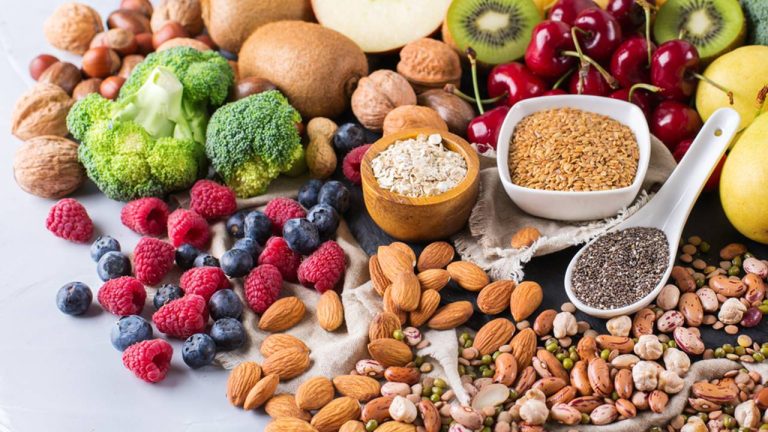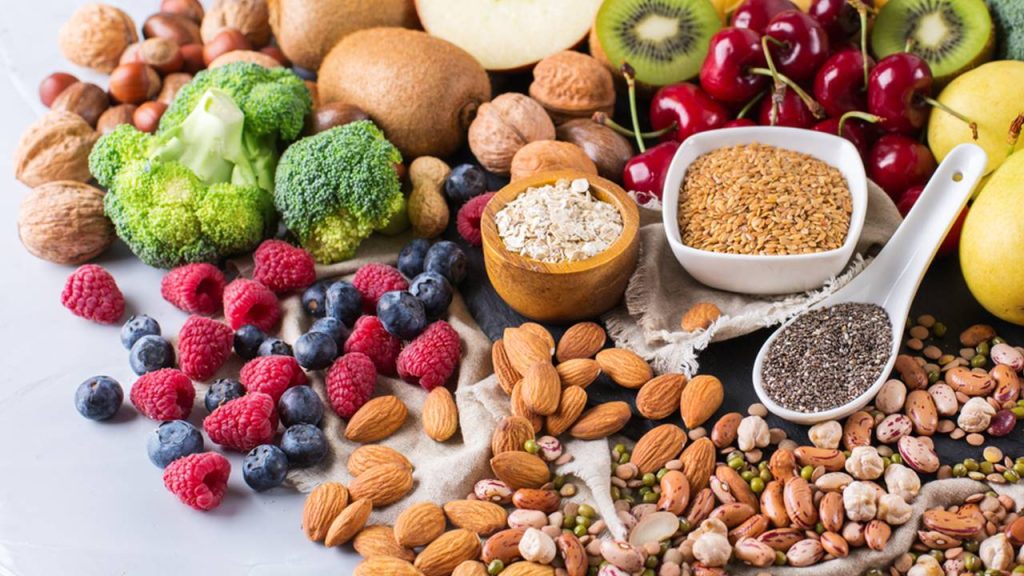
In this list you will find common foods that, since science has confirmed their extraordinary properties, are superfoods. Discover the 15 essentials and how to get the most out of them.

There are many foods that provide valuable nutrients, but some stand out above average. They are the real superfoods on which the edifice of the healthy diet can be built.
We propose a reasoned list of superfoods that you can expand or modify to your liking, replacing some foods with similar ones depending on your tastes and needs.
1. KALE
Properties of kale: Like other cabbages, it is a source of sulforaphane, an enzymatic compound that promotes liver detoxification and contributes to the elimination of potentially carcinogenic substances. In addition, it is the richest vegetable in calcium. To get the most out of sulforaphane, minerals, and vitamins, steam kale for 20 minutes.
- How to enhance this superfood to enhance its qualities you can combine it with mustard.
2. FLAXSEEDS
Properties of flax seeds: All people and especially those who follow a vegetarian diet would benefit greatly from including in the daily diet a heaping tablespoon of crushed flax seeds. This amount provides all the omega-3s needed and lignans, compounds with estrogen-like and antioxidant properties. They also provide digestive fiber and protein.
- How to boost this superfood: You can take the crushed seeds mixed with vegetable milk or juice, or sprinkle them on salads and stews. Other plant sources of omega-3s are hemp seeds and chia seeds.
3. LETTUCE
Properties of lettuce: A crispy salad with lettuce as the protagonist is a must for lunch or dinner. It provides beta-carotene, folic acid, chlorophyll and antioxidants found especially in the darkest leaves.
- How to boost this superfood: To increase its effect you can combine different varieties: roman, oak leaf, marigold, etc.
4. STRAWBERRY
Properties of strawberry: It is an excellent source of vitamin C (about 6 strawberries meet 65 percent of daily needs), anthocyanins and organic acids with purifying and antioxidant properties.
- How to replace this superfood When strawberries are not in season, other small fruits with similar properties are blueberries, blackberries, raspberries, cherries, kumquats and grapes.
5. CHICKPEA
Chickpea properties: As a source of vegetable protein, it has nothing to envy to soy. A serving of 200 g of cooked chickpeas provides 18 g of protein, more than an average hamburger. In addition, they are rich in folic acid, digestive fiber, calcium and slow-absorbing carbohydrates.
- How to cook this superfood: To prevent flatulence, in addition to soaking them overnight, they can be prepared in puree and mixed with cumin, as in the hummus recipe.
6. GREEN BEAN
Properties of green beans: In an ideal dish, half of the space is occupied by vegetables. One of the most nutritious is the green bean, with its almost 3 g of fiber per 100 g and doses of magnesium, phosphorus and iron that cover 10% of daily needs.
- How to cook this superfood: To prepare them, 5-7 minutes steaming are enough.
7. BOLETUS
Properties of boletus: Mushrooms possess compounds that are not found in significant amounts in other food categories. Ergothioneine, for example, is an antioxidant molecule that especially protects the brain. Boletus (Boletus edulis) is very rich in this compound and, like other mushrooms, in vitamin B2, which helps metabolize energy from fats, carbohydrates and proteins from other foods.
- How to cook this superfood in addition, it is delicious and can be prepared grilled, sautéed or baked. Oyster mushroom and mushrooms also contain ergothioneine.
8. PISTACHIO
Properties of pistachio: It is one of the richest foods in vitamin B6, essential for the nervous system, energy metabolism and skin. About 30 g of pistachios provide 28% of the daily needs of this vitamin and 21% of B1. It is also rich in lutein and zeaxanthin, yellow pigments with antioxidant properties especially beneficial for the eyes. On the other hand, its fat profile is dominated by monounsaturated fatty acids, which are heart-healthy.
- How to cook this superfood in addition to eating it raw, here are more recipes to take advantage of the properties of pistachio.
9. CARROT
Properties of carrot: It is the vegetable with more beta-carotene, which in the body is transformed into vitamin A as it needs it. It is therefore very beneficial for mucous membranes, skin and eyes. It is also very abundant in iron, whose absorption increases if we accompany the carrot with foods rich in vitamin C.
- How to take advantage of this superfood Cooking increases the availability of beta-carotene, but eating it raw strengthens the teeth and jaw.
10. APPLE
Properties of the apple: One a day keeps the doctor away, says the Anglo-Saxon saying (“an apple a day keeps the doctor away”). Its properties include the soluble fiber content, which regulates cholesterol and feeds the beneficial intestinal microbiota. Its sugars are assimilated slowly, which favors the balance in the level of glucose in the blood. An apple provides 40% of the vitamin C needed per day.
- How to take advantage of this superfood as it is advisable to consume it with the skin, look for them of organic production.
11. TOFU
Properties of tofu: Tofu, also known as tofu, is the most convenient way to consume this healthy legume. In addition to providing protein (10% of its weight), it contains isoflavones, which are antioxidants and regulate estrogenic activity, and provides significant amounts of iron and calcium.
- How to cook tofu: To consume it, you can marinate it in oil with spices and aromatic herbs for 1-5 hours and pass it on the griddle. On the other hand, it is advisable to buy organic tofu to avoid that it is contaminated with pesticides or has been made with transgenic varieties of soy.
12. LENTILS
Properties of lentils: Lentils are the legume that is prepared faster, especially the peeled red variety. It does not require soaking and is done in 20 minutes. 200 g of cooked lentils provide 18 g of protein, 34% of iron needs, 80% of folic acid and around 20% of vitamins B1 and B6 and zinc.
- How to take advantage of this superfood: It is advisable that they are accompanied in the menu of foods rich in vitamin C, to improve the assimilation of iron.
13. OATS
Properties of oats: It provides energy without unbalancing blood glucose levels or causing inflammation. In addition, it is rich in protein (13% of weight), fiber, B vitamins, magnesium, iron and phosphorus.
- How to prepare this super liement the easiest way to consume it is in flakes that are left to soak in vegetable milk, cold or hot. In the muesli combines with nuts and dried fruit. People with gluten intolerance or sensitivity can choose certified gluten-free oats.
14. BROWN RICE
Properties of brown rice: It is the cereal most consumed by humanity, ahead of wheat and corn. Although it has its origin in Asia, it has been successfully incorporated into Mediterranean culture. The integral presentation, the most nutritious and digestive, because it preserves the fiber and vitamins of group B, regulates the level of glucose in the blood. Vaporizing also maintains much of the vitamins.
- How to take this superfood When consuming it, it is not advisable to fill the plate with rice, but it should represent a quarter of the volume.
15. QUINOA
Properties of quinoa: According to the Food and Agriculture Organization of the United Nations (FAO), quinoa is the food that provides the most nutrients per 100 calories. On the other hand, its cultivation needs little water, adapts to different climates and does not require pesticides. Most quinoa comes from Peru and Bolivia, but Spain is already the leading European producer. Quinoa is a pseudo cereal rich in complete protein (8% of the weight in cooked quinoa), magnesium, iron, B vitamins and antioxidant flavonoids such as quercetin and kaempferol.